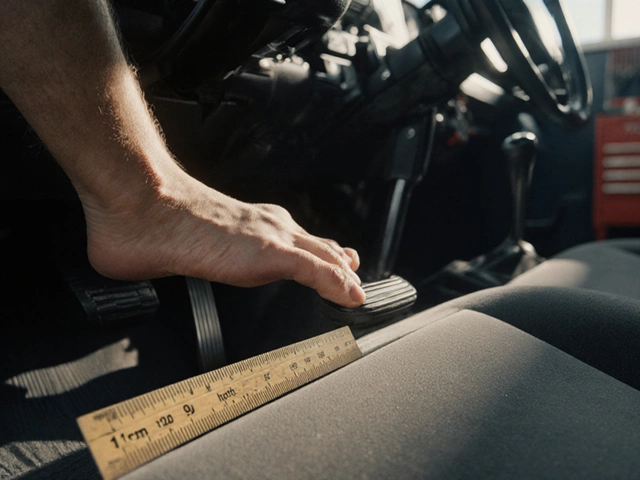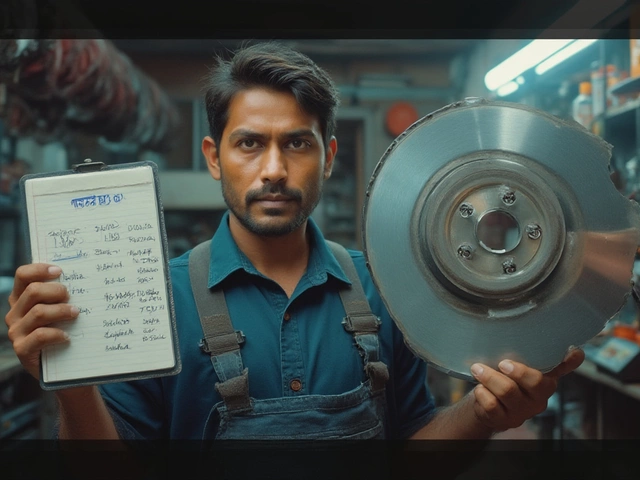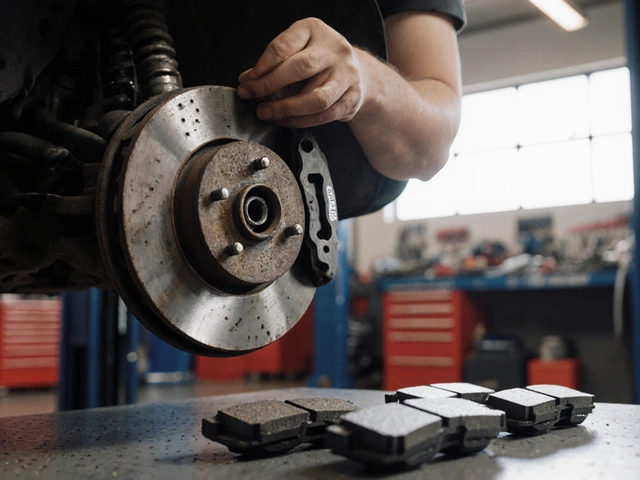
Ever had your car feel sluggish when you hit the gas, or start with a bit of a shake? That’s not just your imagination. Spark plugs are like tiny fire-starters that keep your engine running smooth. When they’re worn out, your ride gets cranky—and sometimes won’t even start at all.
You don’t need to be a mechanic to spot trouble. If your engine’s misfiring, your fuel mileage is dropping for no good reason, or it takes forever to start, your spark plugs might be waving a white flag. Ignore these signs, and you could mess with more than just your morning commute—you might end up with a much bigger repair bill.
Replacing spark plugs at the right time can save you headaches and cash. Tons of folks put this off, but fresh plugs make your car smoother, quieter, and sometimes even quicker off the line. I’ll break down exactly how to spot the signs, check your own plugs, and what happens if you put off this bit of everyday car TLC.
- What Spark Plugs Actually Do
- Signs Your Spark Plugs Are Wearing Out
- How to Check Your Spark Plugs at Home
- When to Change—and What Happens If You Don’t
What Spark Plugs Actually Do
Let’s clear this up: spark plugs aren’t just tiny car parts—they literally keep your engine alive. When you turn the key, each spark plug sends a high-voltage jolt that lights up the fuel and air inside every cylinder. That mini-explosion is what makes your engine run. Skip the spark, and your car simply won’t move.
Every cylinder in a gasoline engine gets its own spark plug. They fire thousands of times per minute as you drive, with timing that’s gotta be exact. Even the best spark plugs eventually get tired, so keeping an eye on them pays off.
Here’s why these little guys matter:
- They ignite the air-fuel mix to make power—no spark means no power.
- Good spark plugs help your engine run smooth and use gas efficiently.
- Fresh spark plugs let your car start more quickly, especially in cold weather.
- Bad or worn plugs can cause misfires, rough idles, and even lower gas mileage.
Automakers use different types—copper, platinum, iridium—but the job is basically the same. Just remember, when your spark plugs aren’t working right, the whole engine feels it. That’s why replacing them every so often isn’t just a random chore; it’s an easy way to keep your car in good shape and out of trouble.
Signs Your Spark Plugs Are Wearing Out
Your car’s not going to put up a billboard to say the spark plugs are shot, but it does give you some clear red flags if you know what to look for. Ignoring these can mean rough rides, higher repair bills, and wasted trips to the gas station. Here’s what usually tips people off:
- Engine Misfire: The car coughs, hesitates, or jerks—especially when you’re idling or picking up speed. It can feel like your engine briefly loses power, then snaps back.
- Hard Cold Starts: If you’re twisting the key and the engine’s taking longer than usual to crank, old spark plugs are a prime suspect.
- Rough Idle: Feel like you’re riding a massage chair at a stoplight, with lots of vibration or choppy sounds? Worn spark plugs can mess with your engine’s rhythm.
- Poor Gas Mileage: When plugs wear out, your engine burns more fuel than it should. If you’re filling up more often for the same drives, that’s a signal.
- Slow Acceleration: Trying to merge and your car just won’t hustle? Weak spark means weak response.
- Check Engine Light: Sometimes that little orange icon lights up because the engine control unit detects a misfire traced back to spark plug trouble.
Here’s a quick-look table showing how each symptom connects to spark plug trouble—and what you might notice:
| Symptom | What You Notice |
|---|---|
| Engine Misfire | Jerking, coughing, or sudden loss of power |
| Hard Cold Start | Longer crank times, especially in mornings |
| Rough Idle | Shaking or uneven engine sounds at stops |
| Poor Gas Mileage | Filling the gas tank more than usual |
| Slow Acceleration | Sluggish response when pressing the gas |
| Check Engine Light | Dashboard warning, often for misfire codes |
Industry folks say most spark plugs start losing their spark between 30,000 and 100,000 miles—depends on the type. But if you spot just one or two of these symptoms, don’t wait for all of them to show up. Swapping out spark plugs early can mean a world of difference for your engine’s health.

How to Check Your Spark Plugs at Home
You don’t need a fancy garage or a wall of tools to check your spark plugs. It just takes a ratchet, a spark plug socket (usually about $5 at any auto parts store), and maybe five or ten minutes per plug. Grab a flashlight—you’ll want good light, because grime builds up fast in engine bays.
- Spark plugs are almost always found at the top or side of your engine. Look for thick wires running to them, about the width of a pencil. These are the spark plug wires or coil packs. Pop your hood, and you’ll see four, six, or sometimes eight depending on your engine’s cylinders.
- Carefully unplug one wire or coil pack at a time. Don’t yank; twist gently. You only want to check one plug at a time to avoid mixing up the order—the order really matters when you reconnect.
- Use your socket to unscrew the plug. Once it’s out, take a look. Plugs should be a bit brown or gray on the tip, not black, oily, or all white. Black and sooty means your engine might be running rich. Oily plugs could mean an oil leak. White or blistered? That means it’s running hot—a separate headache.
- Check the gap at the end of the plug. If you’ve got a spark plug gap tool (they cost about a dollar), slide it in. Most modern cars need a gap between 0.028 and 0.060 inches, but always double-check your owner’s manual for the right spacing. If the gap’s crazy wide or the tip is rounded-off and worn, it’s time for new plugs.
- Check for cracking on the white ceramic part. Cracked plugs just can’t seal or spark right; replace them right away.
- Reinstall gently. Start threading the spark plug by hand before tightening with the ratchet. Don’t cross-thread—fixing that is a pain.
If you spot any gunk, big gap changes, rounded metal, or damage, you’re looking at a plug past its prime. Change all your plugs as a set—don’t just do one. Your engine runs best when every cylinder’s firing right. Doing this simple check every 30,000 to 40,000 miles will keep your engine healthy, help with fuel economy, and keep you off the roadside with a dead battery or a no-start situation.
When to Change—and What Happens If You Don’t
You can’t just wait for your car to refuse to start before swapping out spark plugs. Car makers usually recommend changing them every 30,000 to 100,000 miles, depending on what kind of plugs you have. Copper plugs wear out quicker, while platinum and iridium plugs can go the distance—but nothing lasts forever. Check your owner’s manual for your car’s specific mileage mark.
Here’s why you shouldn’t ignore this simple spark plugs check-up:
- Rough starts: Worn plugs make engines sluggish to start. Sometimes, your car just won’t fire up at all.
- Bad gas mileage: Damaged plugs use more fuel. Even a small drop—like a 2-4% dip—means you’re paying more at the pump every single week.
- Weak acceleration: Your car might feel like it has less power or is slow to respond when you hit the gas.
- Engine misfires: A misfire can sound like your car is coughing or jerking, and can seriously damage your engine over time.
- Costlier repairs: Driving too long with bad plugs puts extra strain on your ignition coils and catalytic converter, both expensive to replace.
Sometimes people skip changing plugs to save money, not realizing it costs more the longer they wait. Here’s a quick breakdown to show the math:
| Item | Average Replacement Cost (USD) |
|---|---|
| Spark plug replacement (all four) | $70-$150 |
| New ignition coils (if damaged) | $200-$400 |
| Replace catalytic converter | $1,000-$2,500 |
| Extra fuel burned per year (due to bad plugs) | $80-$150 |
If you keep putting it off, you’re not just risking a rough daily drive—small problems snowball into huge bills. And honestly, who wants to get stranded on the way to work or on a road trip because of something so basic?
So don’t wait until your car lets you down. It’s much cheaper and way less stressful to swap the plugs before things get ugly.





